The desert-adapted Dune Lark is Namibia’s only endemic* bird. It does not drink water and feeds on seeds and insects in the desert. This little dune runner’s distribution range is entirely within the Namib Sand Sea, from the Kuiseb River in the north to the Koichab area near Lüderitz in the south. It avoids unvegetated dunes near the coast in the central Namib dune belt.
*Note that “endemic” means they only occur in Namibia, whereas “indigenous” means that they occur in Namibia, but not exclusively.
First of all, I am by no means a birder, nor am I a bird photographer. It is a very special hobby that requires patience I might have on most occasions, and equipment I don't have.
Are you ready to have quick fingers to capture the Dune Lark? Always, and I mean always, be ready. If you are not fast enough removing a lens cap, don't put it on.
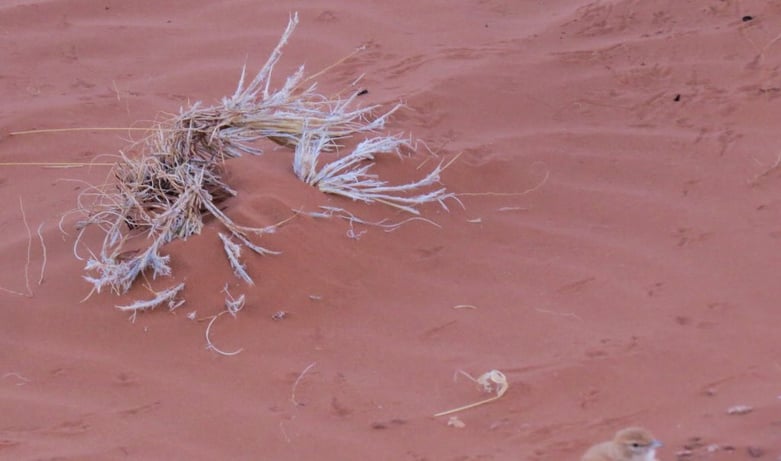 The perfect picture of a Dune Lark. Exactly, you have to be quick! © Annelien Robberts will gladly take the credit for this picture.
The perfect picture of a Dune Lark. Exactly, you have to be quick! © Annelien Robberts will gladly take the credit for this picture.
Follow the steps below:
Step 1: Book your accommodation at the Namib Dune Star Camp. This is one of the few places in the Namib where I have caught multiple glimpses of this little bird. The accommodation is very exclusive, and you can only stay here for one night before heading back to Namib Desert Lodge. (Perhaps you would like to check out some of the other properties in Gondwana’s Namib Desert Collection.)
Step 2: Go on the nature walk with your Gondwana guide. Aside from very valuable information he shares on the formation of the fossilised dunes and all the other creatures that call this place home, you are almost guaranteed to see the swift little Dune Lark running around on the dunes in search of dune ants. (Remember though, the wild is ... well, wild. No one can take responsibility if this little bird decides you will have to stay in the desert for longer for more action.)
Step 3: As soon as you or your guide identify the bird, make sure you have somebody to direct you while you look through the lens, because these birds move swiftly. One moment they might be in focus, the next they're gone. Don’t say I didn’t warn you.
You need to be quick. Don't take too much time waiting for the perfect shot. This little dune runner will disappear behind the crest of a dune before your camera’s flash goes off.
Step 4: Push others out of the way if need be. If they're blocking the view, they asked for it. Worry about injuries later.
Step 5: If you focus so much on catching your first glimpse of the bird that you forget to listen to the rest of the information, you might want to ask your guide to repeat. Fossilised dunes? Yeah, cool, seen them, done that? No, trust me, it gets very interesting. You'd want to listen. Bonus if you're a multitasker.
Step 6: Go back to the lodge for sundowners on the deck just to hear that these birds are best spotted in the mornings. There is still a chance!
Step 7: Buy a beer or a glass of wine for those you might have injured during the dune walk.
Step 8: After a regaling dinner prepared by your personal chef for the evening, roll your bed out onto your chalet’s deck and spend the night under the stars. The magnitude of the night sky will have you in awe and you will fall asleep before you can count five shooting stars.
Step 9: Wake up to the most splendid colours lighting the sky in hues of pink and orange.
Step 10: Pour yourself a lovely cup of coffee brought to your front door somewhere in the early morning hours.
Step 11: Get back into bed with your coffee. It might still be chilly out. Plus, how often do you get to do that?
Step 12: Catch a glimpse of a Dune Lark happily hopping around on its early morning search for food.
Step 13: Spill your coffee to get to your camera.
Step 14: Push your husband/wife out of the way, or even possibly off the bed.
Step 15: Victory is yours as you snap a couple of pics of Namibia’s endemic Dune Lark to take home as your trophy.
If you manage to follow step 1, you too can get a clear enough view of Namibia's endemic Dune Lark without following the rest of the steps. Even if you just have your phone on you.
There you have it! Have you ever had the chance to catch a glimpse of the Dune Lark? Which indigenous Namibian birds are on your birder’s list?
Also read: Dirt roads, desert & starlit dinner
Author – Annelien Robberts is an avid wordsmith who turns her pen to all things travel, culture, and lifestyle. She was born in a small town called Otjiwarongo and grew up on a farm nearby. Creativity, nature and animals make her happy.

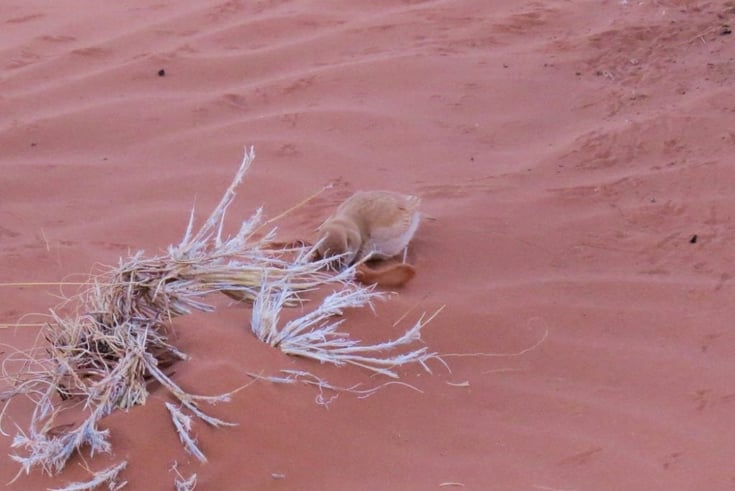
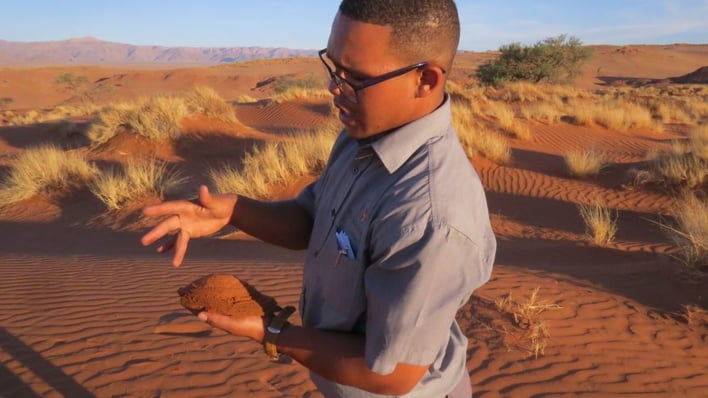
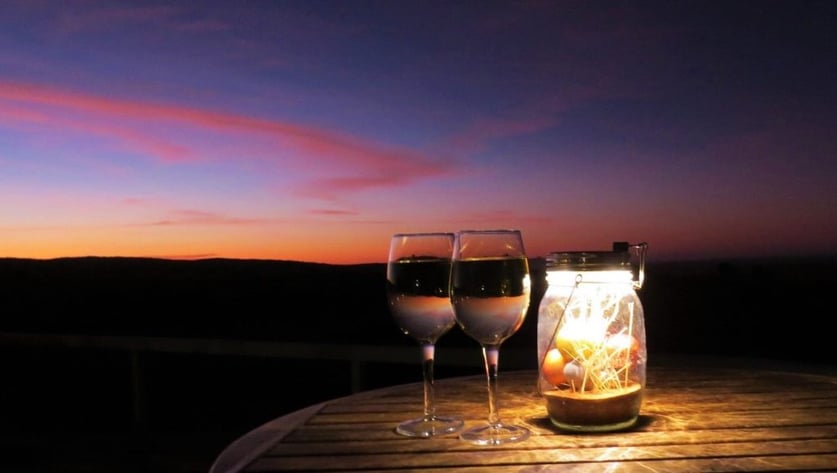
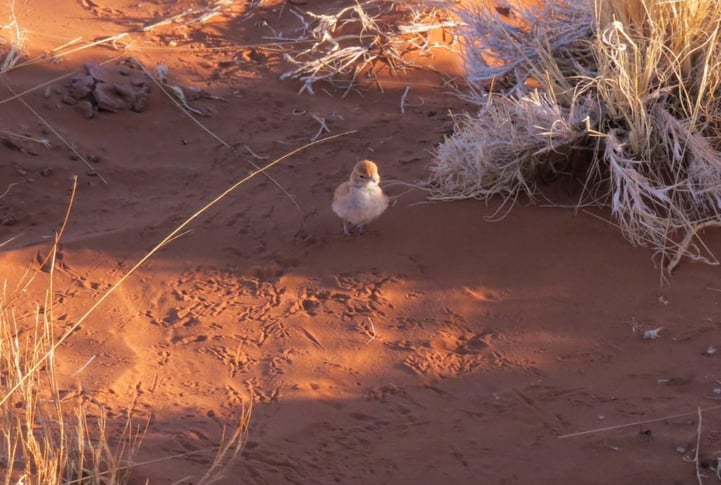
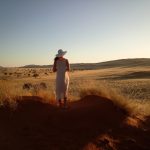


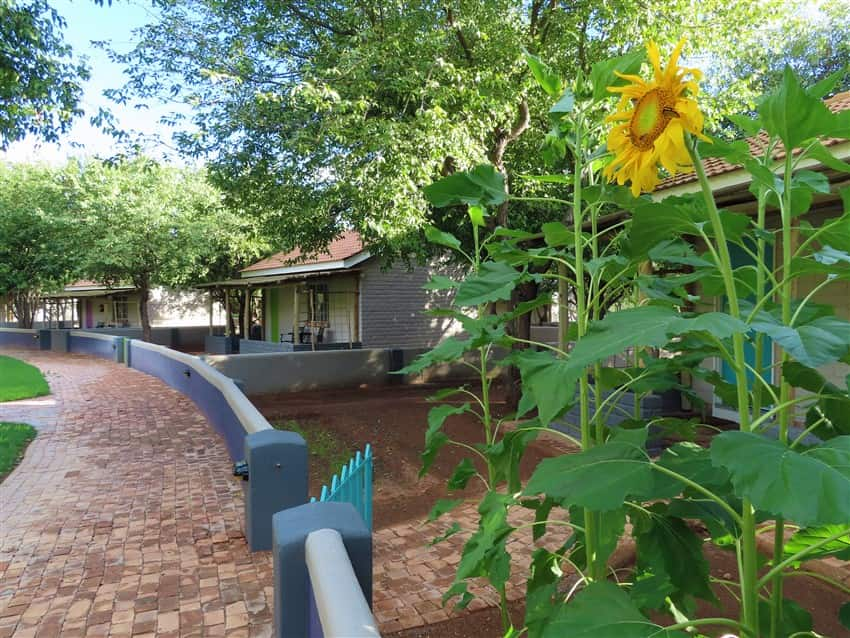

SUBMIT YOUR COMMENT